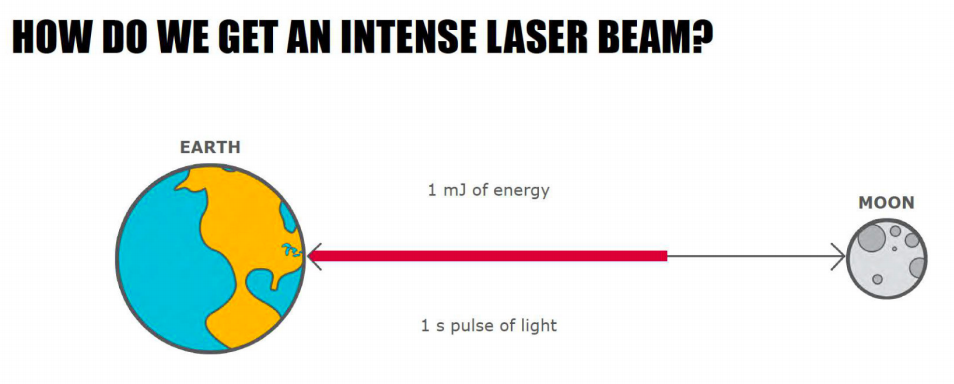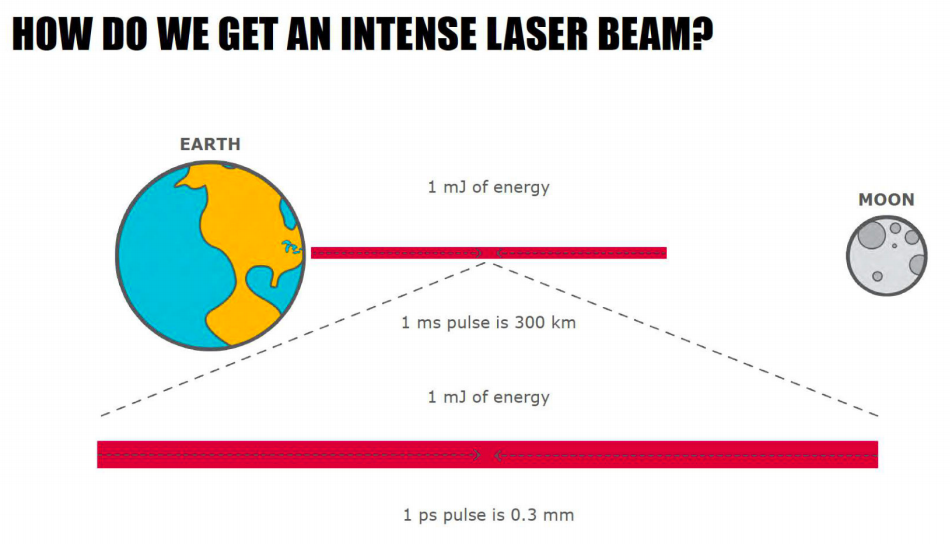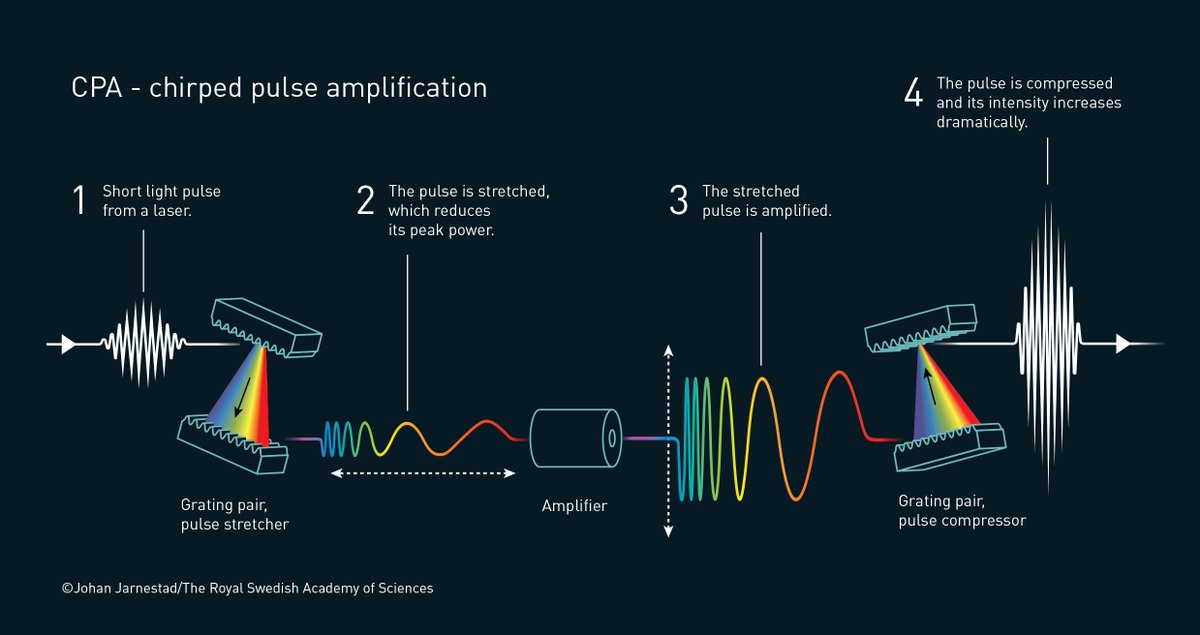Research
When Donna Strickland started her Ph. D. work at the University of Rochester, she though she would study a way to absorb 9 protons from twice ionized nickle. However, in order to test her theory, she needed a very high intensity laser. Her Ph. D. paper soon became about creating this laser, and was the paper that won her and her doctoral advisor the Nobel Prize.
A low powered laser pointer, like one used for pointing to lecture slides, has approximately 1 milliwatt of power, and if it is held on for 1 second, it gives off 1 millijoule of energy. Because the speed of light is so incredibly fast, if that low powered laser pointer were pointed at the moon and held on for 1 second, the front of the laser would have traveled 2/3 of the way to the moon, about 250,000 km, before the second was up.

Photo From: https://www.nobelprize.org/uploads/2018/10/strickland-lecture.pdf
A group of physicists who worked with Peter Frankenz in the 1960's were able to create a laser that also gave off only 1 millijoule of energy, but did so in a millisecond, rather than a second. With this length of pulse, the front of the laser beam would travel only 300 km by the time the pulse ended.
In 1985, Strickland and Mourou were able to create a laser that still only had 1 millijoule of energy, but in a pulse the length of a picosecond. The front of the beam of this pulse only traveled 0.3 mm before the pulse ended.

Photo From: https://www.nobelprize.org/uploads/2018/10/strickland-lecture.pdf
In other words, Strickland and Mourou were able to cram in the amount of protons that would stretch 2/3 of the way to the moon, into 1/3 of a millimeter.
In order to create this high intensity laser, Strickland and Mourou found a way to stretch the laser beam, amplify the beam, and then compress it again, as illustrated by the photo below.

Photo from: https://uwaterloo.ca/stories/nobel-prize-winning-physicist-helped-make-lasers-ubiquitous